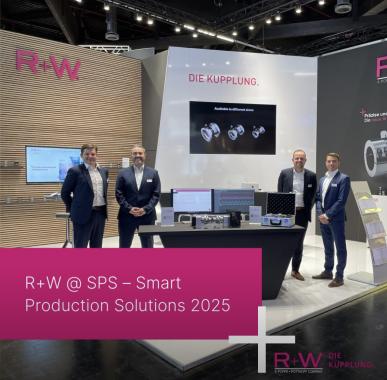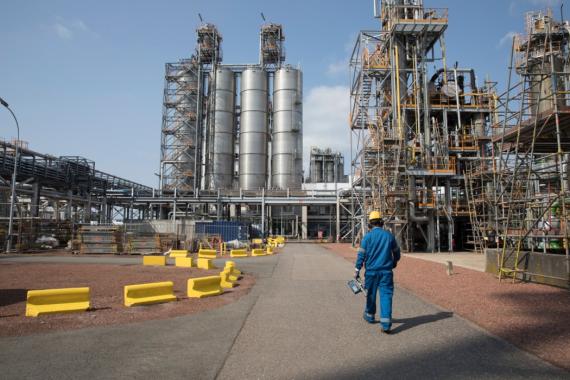Green hydrogen, a decisive lever for carbon reduction in industry

For many industrial players, green hydrogen stands out as a major asset for achieving a strategic priority for the years to come: reducing carbon emissions. Daniel Hissel, professor at the University of Franche-Comté and deputy director of the CNRS National Hydrogen Research Federation , discusses the specificities and industrial potential of this energy vector that is about to become essential.
What are the characteristics of green hydrogen?
Daniel Hissel : “Let's remember our labs in fourth grade : two electrical wires connected to a battery and immersed in water generate bubbles of oxygen on the one hand and hydrogen on the other . Produced by electrolysis of water, hydrogen follows this simple principle. To be qualified as “green”, the condition is that the electricity producing the decomposition of water is produced from renewable energy. The rise of this type of energy (photovoltaic, hydraulic, wind, etc.) opens up the possibility of industrializing this principle on a large scale to meet a certain number of energy needs without impact on the climate. The solution is all the more interesting in that it has another major advantage: hydrogen is a means of deferred storage of the electricity produced. In liquid, compressed or even “solid” form (in practice absorbed in a “solid” material), hydrogen can be stored for several months before being used. The production of the various renewable energies being by nature intermittent, this is a decisive aspect.
To what extent can green hydrogen help achieve greenhouse gas reduction targets?
Daniel Hissel : The main uses of green hydrogen are in industry, mobility and residential. However, these three sectors are, according to the latest data available in France for example, the three most important sources of greenhouse gas emissions. This gives an idea of the potential. But hydrogen obviously does not meet all needs : in some sectors, energy solutions with little impact on the climate already exist and would not benefit from being replaced, such as small individual battery-powered electric cars. One of the keys to the transition will obviously be the price. Green hydrogen remains about three times more expensive than that produced from fossil fuels. Tax and normative changes, but also the large-scale deployment of electrolysers, will prove decisive in reducing this difference .
What will be the main industrial applications of green hydrogen?
Daniel Hissel : The sectors that currently use hydrogen are first of all concerned. Of the 75 million tonnes of hydrogen produced worldwide in 2018, 95% comes from fossil resources (natural gas, oil or coal). Most of it is used by industry for the manufacture of fertilizers – about 80% of the world's hydrogen is used for the production of ammonia – but also the refining of petroleum products or, more marginally, the synthesis of plastic materials. s, the glass industry, the manufacture of electronic components. Pressured in particular by normative constraints, these players will be pushed to “green” the hydrogen they consume over the next few years. Green hydrogen also has great potential to decarbonize a substantial part of steel production, a sector that requires large amounts of energy, which today is mainly derived from coal. Likewise, it can replace the diesel used in the generator sector. Still, it is currently in the field of mobility that green hydrogen is particularly gaining momentum.
Who are the main market players?
Daniel Hissel : The whole planet is now committed to the transition to hydrogen. France, Germany, Spain, Portugal, Spain, Canada, Chile, Australia, Japan, China, South Korea… around forty States have adopted, or are in the process of adopting, a hydrogen roadmap. From an industrial point of view, the Hydrogen Council brings together nearly 200 large companies from different fields (industry, mobility, distribution, etc.), representing a total of 12,000 billion in turnover. With the current momentum, the International Energy Agency has estimated that hydrogen will be involved in 2050 in 20% of energy exchanges worldwide – compared to 3% today. Such a figure implies a substantial increase in power in certain areas: steelworks, mobility, storage of renewable energies, etc.
France wants to become a leader in green hydrogen. Is this ambition achievable?
Daniel Hissel : After announcing in 2018 to devote 100 million euros to decarbonized hydrogen, the French government increased this figure to 7.2 billion euros in 2020, before adding an additional 1.9 billion euros in 2021. The investment has therefore been multiplied by 90 in 3 years, and this only by 2030. This massive financing will undoubtedly be insufficient to convert complete sections of the economy to hydrogen. But it is sending a strong signal, which has a ripple effect on manufacturers. Historical players, such as Alstom, Faurecia Michelin or Air Liquide, are positioning themselves, but also a proliferation of start-ups that rely on the know-how of French laboratories to innovate. This is also the case of ETI and SMEs who have perceived the economic and industrial interest of hydrogen and are converting to it. We can cite, for example, the Gaussin company , whose green hydrogen truck took part in the Dakar in 2022. These are all signs that the dynamic is solid. »
Our other news
See allJoin the largest community of industrial suppliers
- Helping you with your ongoing technology watch
- Provide you with detailed supplier statistics
- Give you international visibility
Discover the largest catalogue of industrial products on the market
- To offer you the best catalogue of industrial products on the market
- To guarantee you a 100% secure platform
- Enable you to have live remote exchanges


 Français
Français 







